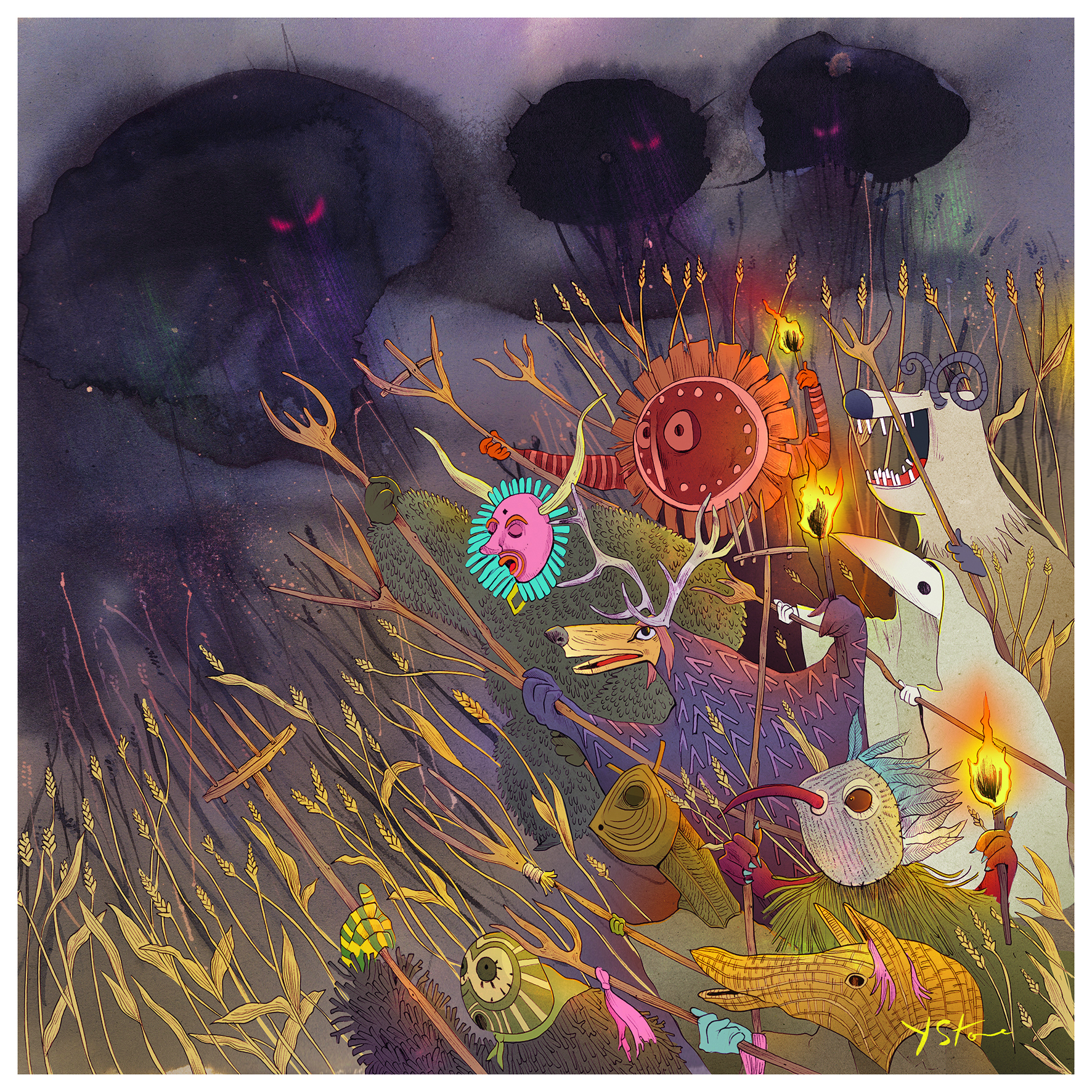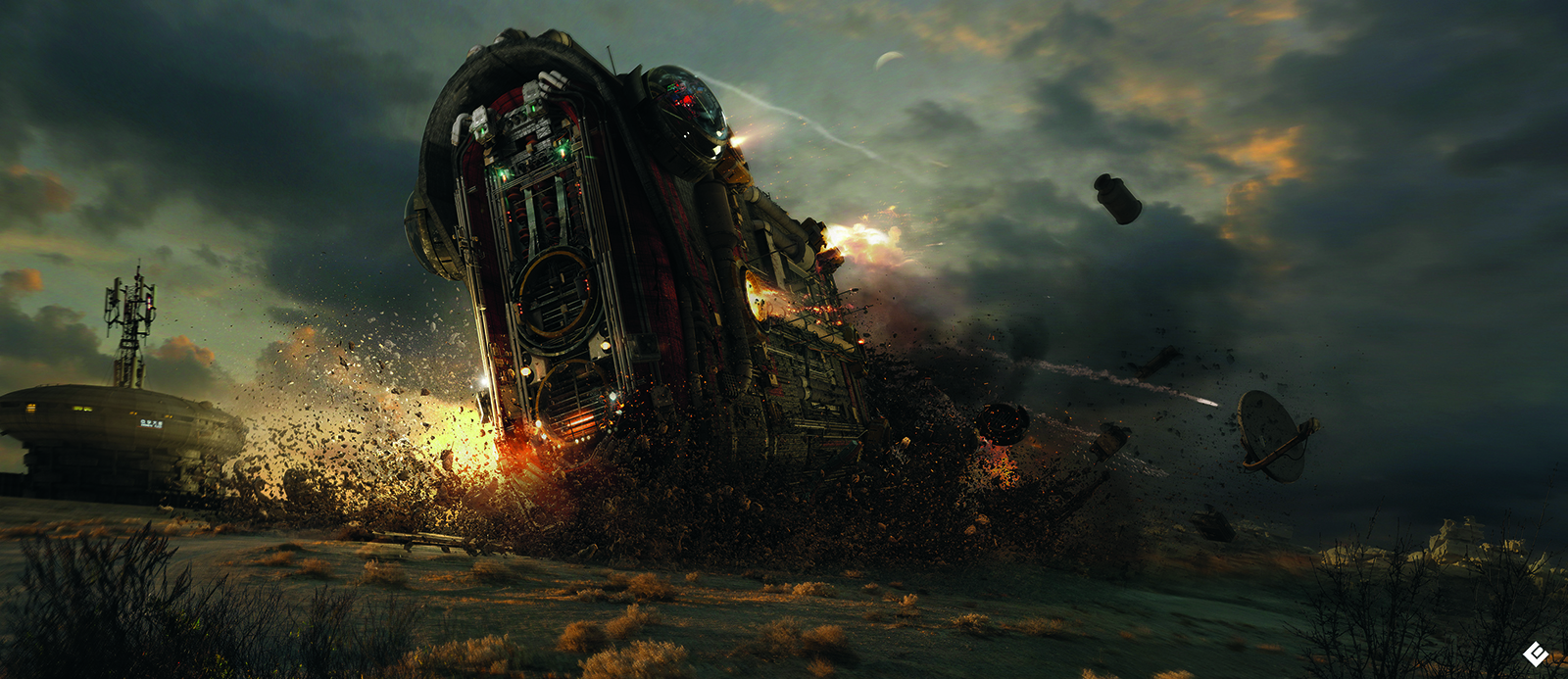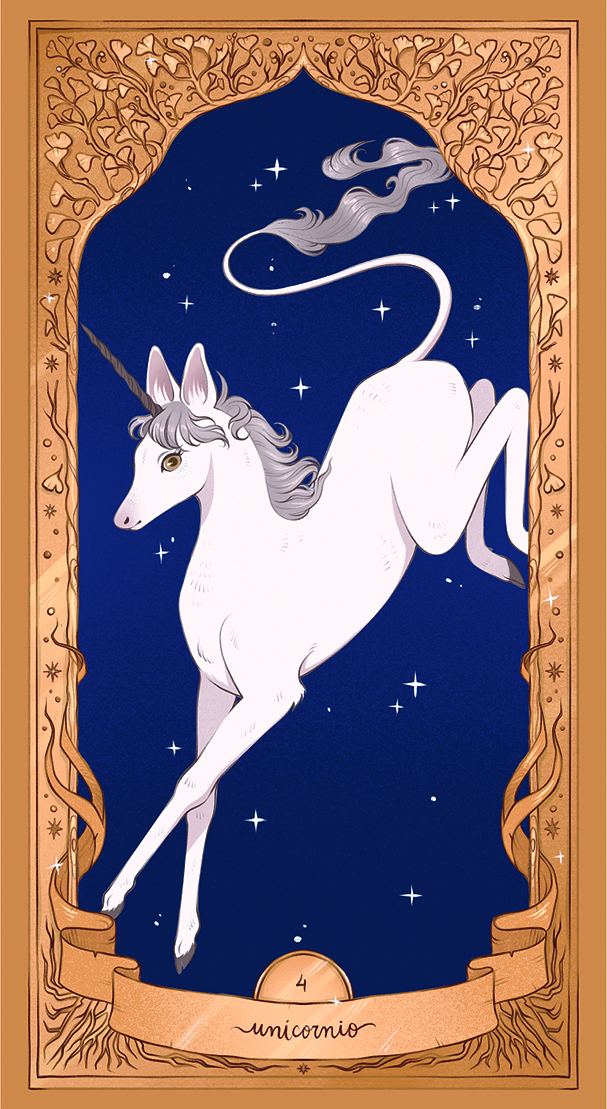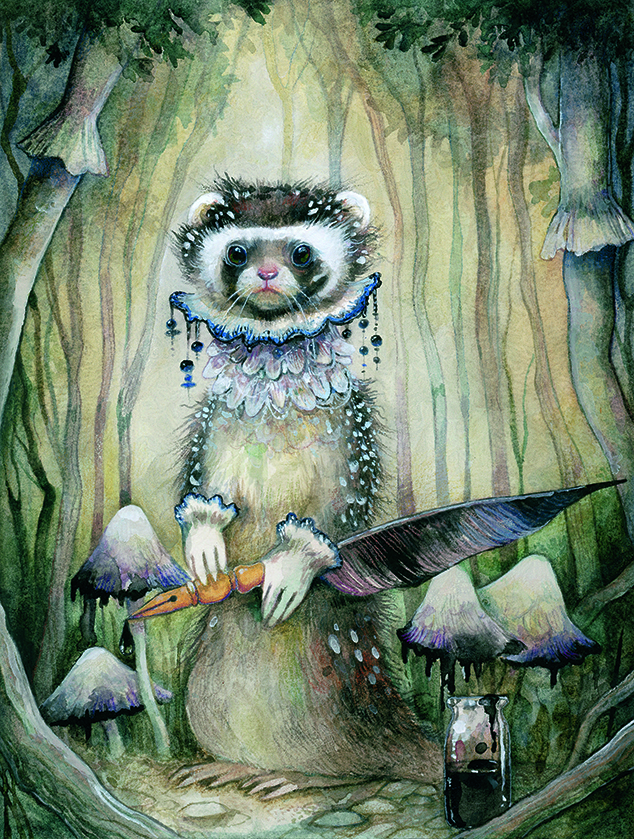
Artists have been disillusioned with social media for some time, but Meta, the company behind Facebook and Instagram, took relations with the creative community to a new low recently with its announcement that users’ images could be used to train its AI models.
We knew last year that images from Instagram and Facebook have been used as training data for Meta’s AI image generator. But now the issue has been brought into the spotlight by an email sent to European users, which announced changes to its Privacy Policy and the intention to extend usage of people’s information to develop AI. Artists have had enough. And the sense of violation is compounded by the fact that it’s not just artwork that’s being misused.

The Faeries of the Faultlines creator Iris Compiet tells us: “The idea that Meta is going to scrape the images I have on Facebook of my deceased father just sickens me.” The values social media sites were built upon have been “systematically eroded”, in the view of freelance llustrator Stephen Stone. “They were a chance to celebrate global connectivity and individual expression,” he laments. “This latest policy will exacerbate what is already a very high level of anxiety for creators.”
This policy will exacerbate what is already a very high level of anxiety for creators
Meta gives EU citizens the right to object to how their information is used for AI-related purposes, but this is a recent development. An artist who is active in the fight against misuse of AI, Eva Toorenent says she and some others tried to opt out of Meta’s data scraping a few months ago and were denied. “Since then, the AI Act has passed in the EU, which forces companies to respect opt-out,” she says.

Eva has lodged her objection. She notes, however, that no one knows whether their data has already been used to train AI models. “Without proper transparency obligations for AI companies, we can’t know for sure how they’ll respect all of our opt-out requests,” she adds.
Iris was also able to log her own objection with Meta, but she sees it as an “empty gesture” because Meta warns that your images or other data could still be used to develop AI if they are posted by someone else. “We cannot control what others post. They can easily take a picture of my art and put it online,” says Iris.

Questions Unanswered
On top of this, in the email sent out to users, Meta says that if your objection is honoured, “it will be applied going forward”. Some, including British concept artist Col Price wonder what that entails. “What exactly does ‘going forward’ mean?” he asks. “Are previous works you’ve posted going to be used?”
Under these conditions it might be tempting for artists to leave Instagram altogether, but for many that’s not an option. “If I left Instagram, I doubt that I’d be able to work as a full-time artist,” says Eva. “Almost all my clients find my work via Instagram. My social media is something that I’ve built up since I was 14 years old. I will not throw that away because Meta has decided to jump on the AI hype train.”

Other artists have been left feeling trapped.“It’s depressing to imagine abandoning my community on Instagram,” says illustrator Ana Bidault. “I’ve been building it for almost 10 years and it’s responsible for some of the best opportunities that I’ve had. Instagram is my window to the world and losing that would mean losing contact with so many people that have seen me grow as an illustrator.”
If I left Instagram, I doubt that I’d be able to work as a full-time artist anymore
Iris says she’ll stay for now, but that she’s already using social media much less than she used to because she’s tired of “the constant fight against the algorithm”. She plans to take down many of her posts, and put her efforts into her website, newsletter and Patreon. “[I’ll use Instagram] just to give teasers and point towards those outlets where the art can be enjoyed in full,” she says.
Rather than leave or stop posting, another option for artists is to use the anti-AI tools Glaze and Nightshade to protect their artworks. Glaze applies a cloak by making tiny changes that aren’t discernible to the human eye, but make a huge difference to how the image is processed by an AI model. Nightshade goes one further and poisons any dataset that contains its images, which can cause the model to learn behaviours that aren’t desired by its makers. The Nightshade FAQ compares it to putting hot sauce on your lunch and labelling it “Do not eat”. If someone steals it and gets ill, they’ve only got themselves to blame.

Eva’s artwork, Belladonna, was the first Nightshaded painting, and she’s a big fan of the technology. “These tools allow artists to protect themselves until regulations and laws are passed to safeguard creatives against generative AI,” says Eva. “Most importantly, they give artists a sense of agency over their work again.”
The only downside with these tools is that they require a lot of computing power. Ana’s computer wasn’t up to the job, so she’s not using them yet. And even if you do have the resources, it’s a big time suck. Col says: “It’s daunting to go through 10 years of artwork and update my website and social media. And It’s just a sad state of affairs that we have to do this due to people’s pure greed.”

Social Saviour
But in all this mess there’s a beacon of hope: the rise of Cara, an anti-AI social app run by artists, for artists. In the days following Meta’s announcement, its userbase exploded from 40,000 to, at the time of writing this article, over 800,000, as people looked for an alternative to Instagram.
Cara’s creator is photographer and art director Jingna Zhang, who is financing the app herself and heroically working with a small team of developers to keep it running in this time of unexpected and booming growth. A particularly trying moment came on 6 June, when Jingna received a notification that an extra $96,280 would be added to her server bill to pay for the surge in users. Supporters have been frantically clicking the ‘Buy Cara a coffee’ button to help keep it online.
Companies have taken a giant risk on AI… I don’t think it’s going to pay off
“AI tools and automation are things I’ve spent a lot of time thinking about,” Jingna explains in a blog post on Cara.
“I felt like there should be a platform built by someone who understands the industry and the advancement of the tech, who has experience building art platforms, and has the best interest of artists at heart.

“With image generators becoming mainstream, it’s going to get difficult for the creative industry to find artists without proper filtering and labelling of AI vs human-made images. Beyond the debate of art versus craft, and the unethical usage of our work without our permission, there needs to be difficult discussions and education around the reality of what’s to come, so we can think about how to help our community and the next generation.
“When I didn’t see any large platforms take meaningful measures to do any of these, I figured maybe I should do something, even if it’s small. So I began Cara as a passion project with just two engineers, and we’ve continued on as more volunteers have joined to make this dream a reality.”

Taking a Stance
breath of fresh air for artists, and has already had a positive impact for her. “The platform fosters an extremely fun and supportive community,” she smiles. “Posting on Instagram can feel like guessing what the algorithm is going to like. Posting on Cara makes me focus on creating art again.
“Almost every company that’s meant to be on the side of creatives and artists has sold us and our data out to the generative AI hype. We’ve been gaslit and exploited. I think these companies have taken a giant risk with generative AI technology, and in the long term I don’t think it’s going to pay off for them. If they can’t make money at the height of the AI bubble, I don’t expect they’re going to make money when things cool off.
“From the beginning Cara had a very clear stance against generative AI technologies. There was a gap in the market for an artist-centred social media platform that took a hard stand against generative AI. I think Cara can fill that gap.”

This content originally appeared in ImagineFX magazine, the world's leading digital art and fantasy art magazine. ImagineFX is on sale in the UK, Europe, United States, Canada, Australia and more. Limited numbers of ImagineFX print editions are available for delivery from our online store (the shipping costs are included in all prices).







